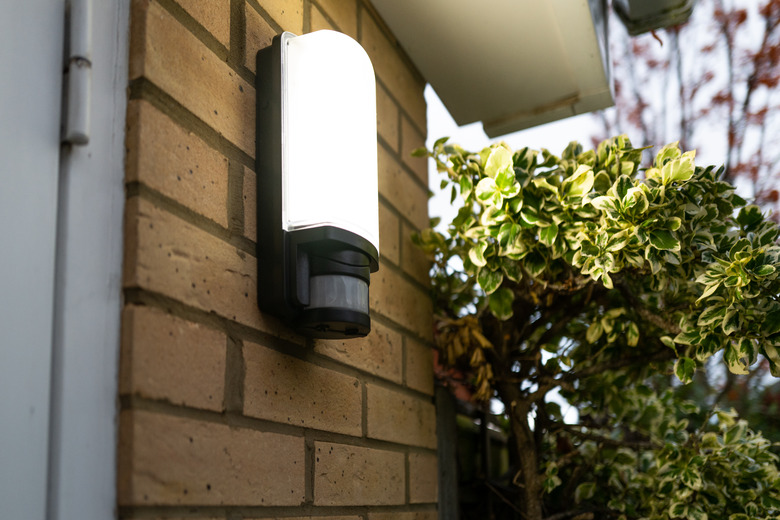Recommended Wattages For Outdoor Lighting
We may receive a commission on purchases made from links.
When planning outdoor lighting, you don't want lights that are too intense or too dim, which is why knowing the recommended wattages for outdoor lighting is important. Choose something too bright, and you'll suffer from glare and wind up with a front yard that resembles either a penitentiary or an opera house.
If you select something too dim, you'll lose the convenience and security benefits of outdoor lighting. When selecting wattage, keep in mind the specific needs and dimensions of the area you will illuminate.
High Wattage Lights
High Wattage Lights
If you're looking to flood your lawn with light, select lighting to accommodate bulbs with wattages of 80 or higher. Bulbs that are 100 watts and higher are appropriate for pedestrian areas, institutions, parking lots or roadways. Roadway lighting may have a wattage of up to 400 watts. Such lighting is suspended high above the ground, features an opaque "night sky shield" cap and provides lighting for a broad area.
For yards or gardens, the maximum recommended wattage is around 80 watts. Philips Lumec manufactures a number of 82 watt LED fixtures recommended for gardens or residences.
Mid-Range Wattage Lights
Mid-Range Wattage Lights
To bathe a small yard or driveway in gentle to moderate light, select a lighting fixture that accommodates 40 to 80 watt bulbs. Many landscape light fixture options fit within this general range, with 60 watts being common.
To extend this level of wattage over a broad area, select a model that mounts from a post, or mount it from an arm extending from a high wall. With this range of wattages, you'll still want to avoid mounting the lights directly adjacent to any home windows to avoid unpleasant nighttime glare.
Low Wattage Lights
Low Wattage Lights
Using low wattage bulbs up to 40 watts can reduce your energy consumption, minimize light pollution and target those areas you most want illuminated. In addition, while your solar lighting options are extremely limited at higher wattages, you can much more easily find a solar lamp at a low wattage. Low wattage lights might not kick out lots of light, but they're ideal for highlighting things in your landscaping or creating gentle illumination on pathways.
To illuminate a footpath or encircle an outdoor seating area, stagger a series of low wattage lights to provide several small, overlapping rings of light. For example, a series of 18 or 20 watt bulbs provides plenty of power to illuminate a footpath, shine light on a doorway or accent a flowerbed. As with any kind of light source, direct the light to take full advantage of its wattage. In the case of footpath lighting, as for overhead pole lighting, select a lamp with an opaque cap to direct all light downward and avoid any waste or glare.
Choosing Wattages for Outdoor Lighting
Choosing Wattages for Outdoor Lighting
Layering landscape lighting with different wattages helps you balance out your lighting needs. Choose lighting for the different parts of your landscaping based on how bright you need the light to be in that area. With the different wattages in the landscaping, you get the brighter light you need for security and safety while pulling in softer light to highlight features without creating lots of glare.
